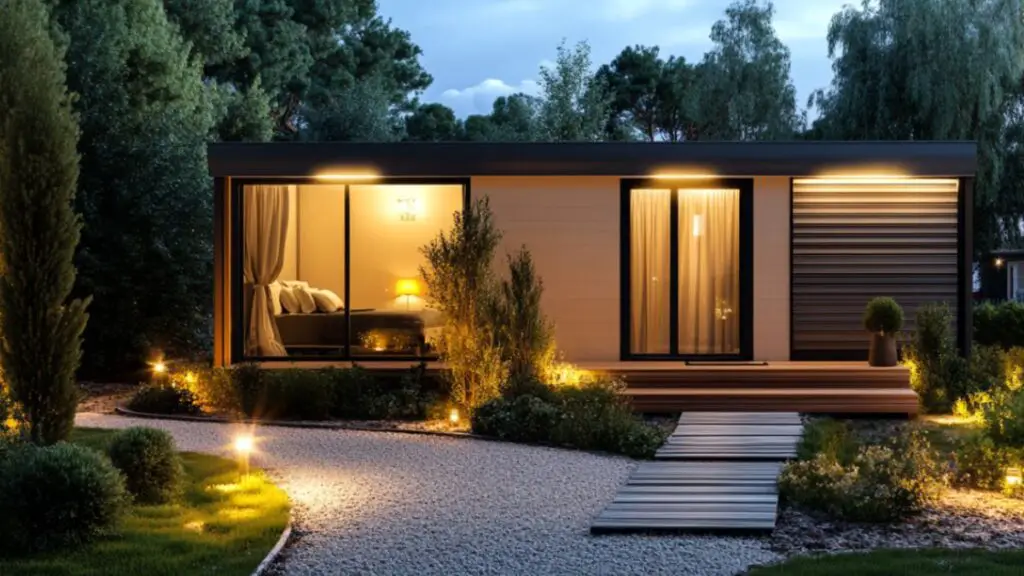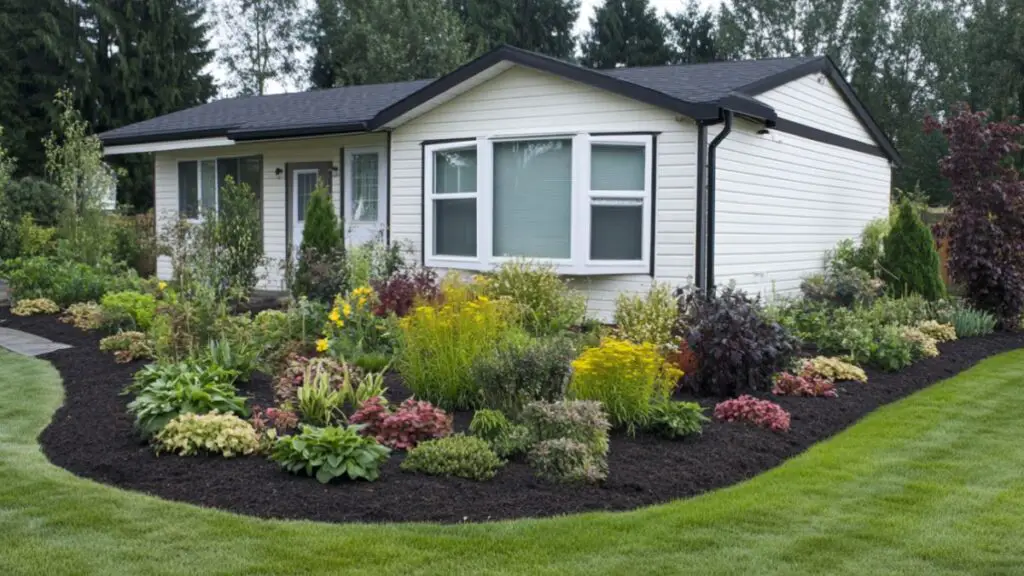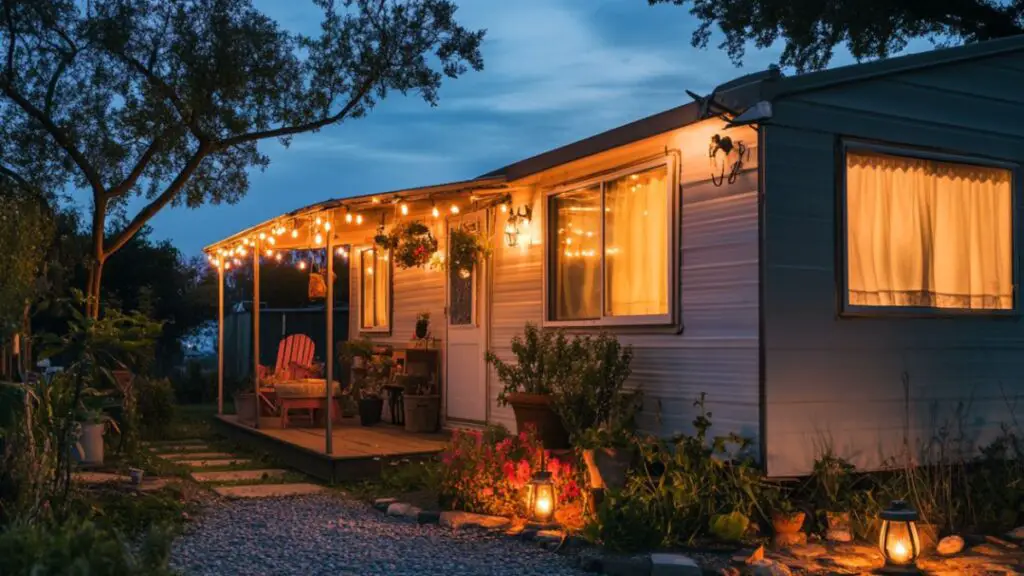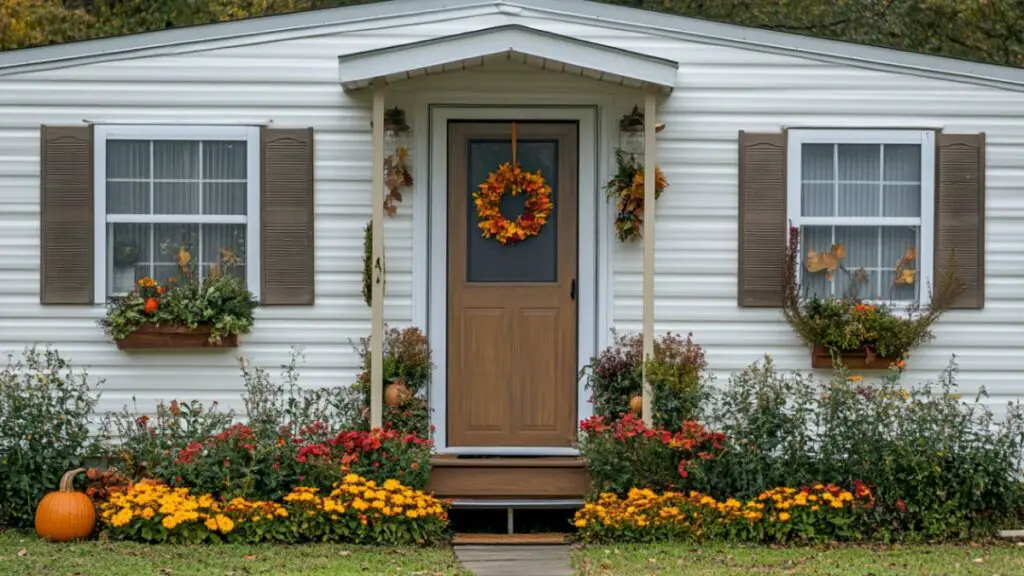Simple Mobile Home Landscaping Ideas to Refresh Your Front Yard Naturally
Table of Contents
Introduction
When it comes to home design, we often focus on interiors—but your front yard is the first thing people see. And for mobile homeowners, creating a beautiful and functional landscape isn’t just possible—it’s one of the most effective ways to add value and charm. According to landscaping experts, even small upgrades in outdoor design can boost curb appeal by 5–12%, depending on the market.
Yet mobile homes come with their own unique challenges—limited lawn space, visible skirting, and zoning restrictions. The good news? With a few thoughtful touches and the right plants, you can easily refresh your mobile home’s front yard into a space that feels welcoming, stylish, and connected to nature.
In this guide, we’ll explore simple, affordable, and low-maintenance landscaping ideas that help mobile homeowners transform their outdoor space into a cozy, curated retreat. Whether you’re a long-time resident or just moved into a new home, these tips are tailored to blend aesthetics with function—just like any beautifully styled living room, but outside.
In-Depth Outline
1. Design Principles for Mobile Home Landscaping

- Prioritize balance and proportion with low-profile shrubs and planters.
- Soften your home’s edges with foundation plantings.
- Define walkways and borders for a cleaner, finished look.
- Use repetition of plant types or hardscaping to maintain visual cohesion.
- Keep lines clean: think mulch borders, curved beds, and defined paths.
Table: Landscaping Do’s and Don’ts for Mobile Homes
| Do | Don’t |
|---|---|
| Choose compact plants | Use oversized shrubs that crowd space |
| Use mulch to define beds | Let lawn run up to the house foundation |
| Add pathway lighting for warmth | Rely on porch lights only |
2. Foundation Planting Ideas to Hide Skirting and Add Texture

- Use layered beds: groundcover, perennials, and small shrubs.
- Evergreen shrubs like dwarf boxwood provide year-round structure.
- Mix in ornamental grasses and flowering plants for color and softness.
- Avoid planting too close—leave room for airflow near skirting.
- Use dark mulch for contrast and weed control.
Table: Foundation-Friendly Plants
| Plant Type | Examples | Best Features |
|---|---|---|
| Evergreen Shrubs | Boxwood, dwarf juniper | Low maintenance, structured |
| Perennials | Daylilies, coneflowers, lavender | Seasonal color, pollinator-friendly |
| Ornamental Grasses | Blue fescue, carex | Texture, drought-tolerant |
3. Planters and Containers for Instant Curb Appeal
- Perfect for homes with limited garden beds or poor soil.
- Use matching pots for symmetry near entry steps.
- Incorporate seasonal swaps (mums in fall, petunias in summer).
- Consider hanging planters or railing boxes for added greenery.
- Choose containers with drainage and weather-resistant finishes.
Table: Best Planters for Mobile Homes
| Planter Type | Ideal Placement | Recommended Plants |
|---|---|---|
| Ceramic Pot (Tall) | Beside front door | Lavender, boxwood, herbs |
| Window Box | Below windows | Trailing petunias, ivy |
| Hanging Basket | Porch or patio beams | Ferns, verbena, sweet potato vine |
4. Ground Cover Options Beyond Traditional Grass

- Grass alternatives reduce mowing and watering needs.
- Use pea gravel or mulch for walkways or sitting areas.
- Consider low-growing plants like creeping thyme or sedum.
- Lay stepping stones for a stylish, functional path.
- Great for dry climates or shady lots.
Table: Ground Cover Materials Comparison
| Material | Pros | Best Use Case |
|---|---|---|
| Pea Gravel | Permeable, modern look | Paths, patios, low-traffic zones |
| Bark Mulch | Suppresses weeds, plant-friendly | Flower beds, tree rings |
| Creeping Thyme | Fragrant, soft, low-growing | Between pavers, border beds |
5. Lighting Touches to Make Your Front Yard Shine

- Use solar path lights to guide walkways and define edges.
- Mount sconces or lanterns beside your door for charm and security.
- Hang string lights or café bulbs along porches or privacy fences.
- Spotlight a tree, large planter, or decorative item.
- Ideal for extending the enjoyment of your yard into the evening.
Table: Outdoor Lighting by Function
| Lighting Type | Placement | Purpose |
|---|---|---|
| Solar Path Lights | Along walkways | Navigation and ambiance |
| Wall Lanterns | Beside the door | Visibility and style |
| Uplighting | Near trees or beds | Highlight key features |
6. Seasonal Landscaping Updates to Keep Things Fresh

- Add wreaths or seasonal planters near the door for holidays.
- Swap in different colored flowers or foliage each season.
- Use portable décor like signs, doormats, or hanging flags.
- Avoid clutter by sticking to 2–3 seasonal elements at once.
- Consider evergreen anchors that stay consistent year-round.
Table: Easy Seasonal Front Yard Swaps
| Season | Simple Décor Ideas | Plant Suggestions |
|---|---|---|
| Spring | Tulip planters, pastel wreaths | Daffodils, pansies, herbs |
| Summer | Bright blooms, outdoor rugs | Petunias, marigolds, coleus |
| Fall | Pumpkins, mums, corn stalks | Chrysanthemums, ornamental kale |
| Winter | Evergreen garland, lanterns | Boxwood, cedar, holly |
Detailed Content Expansion
1. Design Principles for Mobile Home Landscaping
Just like styling an interior space, landscaping begins with the basics—proportion, balance, and flow. A well-landscaped mobile home doesn’t need sprawling flower beds or expensive stonework. What it needs is clear definition, visual softness, and cohesive structure.
Start by defining your zones. If your home sits directly on a patch of lawn, you can easily add depth with simple mulch borders and small shrubs planted a few feet from the skirting. These elements soften the hard edges of the structure while adding a layered, lived-in look.
Keep symmetry in mind when framing your front entry—matched planters or lighting fixtures can make a small entry feel grand. For a more organic vibe, use curving beds lined with stones or natural edging. Color-wise, stay within a muted, natural palette that blends with your home’s siding: think soft greens, warm neutrals, and the occasional pop of color via planters or flowering annuals.
Table: Landscaping Do’s and Don’ts for Mobile Homes
| Do | Don’t |
|---|---|
| Choose compact plants | Use oversized shrubs that crowd space |
| Use mulch to define beds | Let lawn run up to the house foundation |
| Add pathway lighting for warmth | Rely on porch lights only |
2. Foundation Planting Ideas to Hide Skirting and Add Texture
Many mobile homes come with visible skirting or undercarriage space that—while functional—isn’t always aesthetically pleasing. That’s where foundation planting comes in. This layered approach helps hide gaps and adds instant softness to your exterior.
Start with a base layer of mulch or low-spreading ground cover like creeping thyme or vinca minor. Then add a row of perennials or flowering shrubs about 12–18 inches from the house. For year-round appeal, include one or two evergreen anchors such as dwarf junipers or small boxwoods.
Ornamental grasses are also a game-changer for texture and movement. They’re drought-tolerant, easy to maintain, and look elegant when swaying in the breeze. Keep everything spaced for airflow to avoid trapping moisture near the skirting.
Table: Foundation-Friendly Plants
| Plant Type | Examples | Best Features |
|---|---|---|
| Evergreen Shrubs | Boxwood, dwarf juniper | Low maintenance, structured |
| Perennials | Daylilies, coneflowers, lavender | Seasonal color, pollinator-friendly |
| Ornamental Grasses | Blue fescue, carex | Texture, drought-tolerant |
Conclusion
Your mobile home’s front yard is more than just a patch of grass—it’s the welcome mat to your lifestyle. With a few well-chosen plants, thoughtful lighting, and natural accents, you can transform even the simplest space into a cozy, curated outdoor retreat. Whether you’re planting foundation shrubs, styling container gardens, or layering gravel pathways, the goal is always the same: create a space that feels like home, inside and out.

